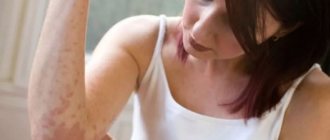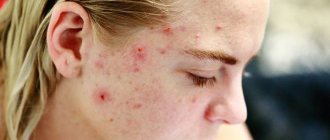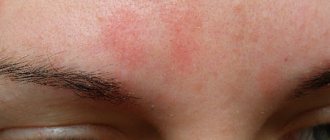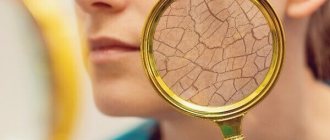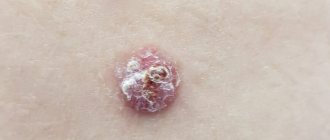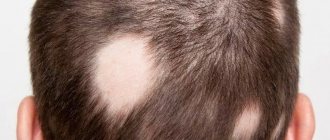1.What is pityriasis versicolor?
Pityriasis versicolor
Also called “lichen versicolor” or “sun fungus”. This type of fungal disease is not as common in our climate as in countries with hot, humid climates. However, dermatologists in Russia detect pityriasis versicolor in 5% of the population.
Especially often, the fungus colonizes on the body of people prone to excessive sweating and seborrheic diathesis, which creates a favorable environment for the introduction and development of this skin infection. Pityriasis versicolor lasts for years without treatment, practically without affecting the general condition of a person, but creating psychological discomfort due to cosmetic defects of the skin. Manifestations of the disease are reduced in winter and worsen in the hot season.
A must read! Help with treatment and hospitalization!
Your child has microsporia
To children, the world can seem like one big playground full of adventure. But their desire to play in the ground, pet animals, touch other people's things can lead to infection with various infectious and parasitic skin diseases. Children are especially susceptible to this because their immune systems are not yet fully developed. Summer, holidays, children's holidays in camps, outside the city, lead to a seasonal rise in these diseases. Currently, one of the common skin infections is microsporia. Microsporia affects mainly children of preschool and school age, less often adults. Microsporia is caused by a fungus that gets on children's skin called Microsporum. The fungus is very stable in the external environment. In hair, skin flakes, wool, dust, it retains the ability to infect for several years.
How can your child become infected?
Infection occurs through direct contact with a sick animal (cats, kittens, less often dogs), or objects infected with hair or scales (combs, hats). It is possible to transmit microsporia from sick family members, but this happens less frequently. There have been cases of children becoming infected after playing in the sandbox. However, if you follow the rules of personal hygiene, even if the pathogen spores come into contact with the skin, the disease can be avoided.
How does the disease manifest in a child?
After an incubation period of 5-7 days on average, foci of infection appear on smooth skin or scalp. Microsporia can appear on any part of the skin, but more often on exposed parts of the body. In mild forms of the disease, round lesions form on the skin, clearly defined, covered with scaly nodules and blisters along the periphery. They often form bizarre shapes, like a “ring within a ring”. At the same time, vellus hair may be affected, which complicates the treatment of the disease. The number of lesions ranges from single to several dozen. Size from 0.5 to 3 cm. When the scalp is affected, 1-2 large lesions are formed, round in shape, with clear boundaries and abundant pityriasis-like peeling. The hair breaks off at a height of 6-8 mm above the skin level (hence the name of the disease - ringworm), because the hair in the lesion appears to be trimmed. There may be slight itching in the affected area. The general condition of children is usually not disturbed. With a decrease in immunity, a child may experience complicated forms of microsporia - infiltrative and suppurative forms. The infiltrative form is characterized by the development of severe inflammation in the lesion. The suppurative form is characterized by the formation of dense foci, round in shape, consisting of deep abscesses (cavities filled with pus). Nearby lymph nodes increase in size. The child's general condition may worsen and the temperature may rise. If a child has suffered microsporia in a mild form, then no traces of the disease remain on the skin or scalp. After a complicated form of microsporia, scars may remain on the skin, and focal baldness may remain on the scalp.
Before treatment, visit a doctor.
If a suspicious rash appears on a child’s skin or scalp, consult a dermatologist without first lubricating the affected areas, as this may complicate diagnosis. Correct diagnosis is half the success in treatment. Skin lesions with microsporia can be confused with other types of lichen, psoriasis, eczema, and hair loss may not be caused by a fungal infection. The diagnosis of microsporia is established on the basis of external signs and must be confirmed by microscopic examination and isolation of the pathogen (growing on a nutrient medium). An important diagnostic criterion will be the greenish glow of the affected hair in the rays of an ultraviolet quartz lamp. A similar study is also used in veterinary medicine, so if you have any doubts about the health of your furry pet, take him to the doctor too, but to a veterinarian. As in children, ringworm in pets (dogs, cats, etc.) can appear as patches of hair loss and skin inflammation. However, many animals infected with microsporia have no symptoms and appear completely healthy and safe. This phenomenon is called colonization.
How to cure microsporia or ringworm in a child?
If the doctor confirms that your child has microsporia, he will be able to prescribe you the correct treatment, without which the disease can take a very long time to develop, can cause complications and can spread to other people. Uncomplicated, single lesions on the skin, without damage to vellus hair, can be treated on an outpatient basis, using only external antifungal agents. During treatment, you should not bathe your child in the bath; wash only in the shower, trying to avoid areas with rashes and using antifungal shampoo for washing. Be sure to provide your child with individual bath and bedding items, and iron clothes with a hot iron after washing. Disinfect all toys with an available antiseptic or boiling water.
Numerous foci of microsporia on smooth skin, with damage to vellus hair, damage to the scalp, and complicated forms are an indication for treating a child in a hospital. In addition to external therapy, systemic antifungal drugs are used for treatment. The dose and frequency of taking systemic antimycotics is prescribed by the doctor, taking into account the child’s weight, his general condition, and the manifestations of the disease. How do you know if treatment for ringworm is helping?
In order to determine how the treatment is going, it is necessary to take control tests from the lesions for fungi.
If the tests show that there are no living fungi in the scrapings, this will mean that the treatment was effective.
Typically, the number of fungal spores in the skin and hair is significantly reduced 2 weeks after the start of treatment. The complete disappearance of fungi occurs later. Sometimes, despite active treatment, the release of fungal spores can continue for several months.
If tests show that, despite treatment, fungi are still present in the skin tissues, the doctor may advise either prolonging treatment, prescribing you other antifungal medications, or increasing the dosage of the drug.
Is there any other way to quickly cure ringworm?
Unfortunately, there are no faster and easier methods for treating ringworm.
Can ringworm go away without treatment?
There are cases when ringworm went away on its own. However, more often than not, it does not go away without treatment and spreads to other areas of the skin.
In a child with ringworm, if left untreated, the disease may persist into adulthood.
Can ringworm reoccur?
The human body is not able to develop immunity against the fungi that cause ringworm, so both adults and children can develop the disease again if they become infected with the fungi again.
Ringworm can also recur if treatment is not completed and if viable fungal spores remain in the skin tissue and hair.
Is there a (vaccine) shot for ringworm?
Unfortunately, an effective vaccine against ringworm in humans has not yet been developed.
Carefully following your doctor’s recommendations will help you quickly cope with the disease, and following preventive measures will prevent infection.
How to prevent infection with microsporia?
Considering that the main source of microsporia infection are stray animals, parents, and caregivers. teachers should explain to children that they should not pet or play with stray cats and dogs. To prevent microsporia, you must follow the following rules:
Keep children's hands, body, and hair clean. Do not allow children to wear other people's things, hats, or use other people's combs. Make sure that children wash their hands thoroughly after playing outside, after contact with pets, especially if they are walking outside, and do not take them to bed. Under no circumstances should you play with homeless animals. If you decide to bring a cat or dog into your home, you should definitely check them with a veterinarian. Do not throw sick cats and dogs outside. This contributes to the spread of the disease among animals and can become a source of infection for children. Be carefull.
2. Causes of the disease
Pityriasis versicolor is caused by the fungi Malassezia furfur and Pityrpsporum orbiculare.
Their habitat is the stratum corneum of the epidermis.
The causative agent of pityriasis versicolor is conditionally pathogenic, that is, it is transmitted from person to person, but does not cause the disease itself in everyone. The likelihood of infection and the onset of the disease increases by a number of factors - external and internal:
- increased sweating and oily skin;
- vegetative-vascular dystonia;
- high blood sugar;
- treatment with corticosteroids;
- decreased immunity;
- hormonal disorders;
- chronic diseases;
- solar radiation;
- hygiene violations;
- stress and metabolic disorders.
It has been noted that the disease affects mainly people of the middle age group. Children under 7 years of age practically do not get pityriasis versicolor.
Visit our Dermatology page
Method of infection
Mushrooms can come into contact with the skin of a healthy person, but with strong immunity, the body uses protective functions and the disease does not occur.
Main routes of transmission:
- Skin contact with the carrier.
- In public places: shower, fitting room.
- Use of a person’s personal belongings: towel, washcloth.
When infected with this microorganism, symptoms do not appear for 2 weeks to several months. They may not appear at all unless a situation arises when the immune system weakens.
3. Signs and diagnosis of the disease
, asymmetrical spots up to 5 cm in size appear
, which merge over time, forming quite large foci. The edges are usually jagged and the color is yellow, pink, brown or white. Sun exposure often changes the color of the spots. Pityriasis-like peeling occurs on the surface, although inflammatory processes are rare. If papules and pustules appear, then most likely this is a consequence of other skin infections superimposing on the affected areas.
Foci of lichen are usually located on the back, neck, abdomen and shoulders, in the groin area.
If the head is affected, the hair in these places does not change at all. Sometimes pityriasis versicolor causes itchy skin.
It is used to examine foci of affected skin.
Wood's lamp, microscopic analysis, Balser's iodine test.
About our clinic Chistye Prudy metro station Medintercom page!
Symptoms
Ringworm on the face and body appears in the form of pink or red circles raised 1-3 mm above the surface of the skin. The lesions are characterized by clear boundaries, while pale areas of skin with red dots are visible inside. These spots quickly increase in size. Their number is growing over time.
The skin inside the lesions becomes covered with a white crust, which peels and itches. Ringworm on the scalp is characterized by split hair and hair loss. As the number of lesions increases, they begin to connect and overlap each other. Ringworm on the body occurs with increased symptoms when the pathogen gets inside existing lesions, and new fungal rings form in them.
4. Treatment of pityriasis versicolor
Treatment of pityriasis versicolor should be carried out in a course. Unsystematic measures only reduce the likelihood of a complete cure. Antimycotics, salicylic alcohol, products with selenium sulfide, and imidazole derivatives have an effective effect on the fungus
rumicosis and terbizil
tablets are prescribed The course of continuous treatment must be
at least 14 days.
In addition to external influences on the fungus - ointments, lotions and sprays - the effectiveness of treatment can increase significantly if the patient himself takes a number of measures:
- exposure to ultraviolet light on the skin;
- wet cleaning and disinfection of living space;
- washing clothes at 90-95 degrees;
- ironing towels and bed linen;
- replacing the washcloth with a new one, updating detergents;
- wearing underwear only made from natural fabrics;
- proper nutrition, adequate sleep, immunostimulating procedures.
During the treatment period and for further prevention of relapse of the disease, folk remedies
, aimed at reducing sweating, cleansing the skin of excess fat, antiseptic measures. Skin fungus does not do well in an acidic environment, so lotions with vinegar, lemon juice and sour berries are suitable.
Can I go to work or school with ringworm?
The presence of this diagnosis requires isolation of the patient from the team for at least two weeks. In schools and other children's institutions, it is mandatory to notify parents for timely detection of the disease in other children.
The disappearance of ringworm symptoms and 3 negative tests for the presence of fungus are a reason to return to school or work.
If a dermatomycosis infection has been detected in a team, then to prevent pathology, you can use antifungal shampoos for some time, carry out wet cleaning with the addition of antiseptic solutions, and strictly observe personal hygiene.
- Treatment of lichen in Kharkov;
- treatment of lichen in Uzhgorod;
- treatment of deprivation in Sumy;
- treatment of lichen in Poltava;
- treatment of lichen in Odessa;
- treatment of deprivation in Nikolaev;
- treatment of lichen in Mariupol;
- treatment of deprivation in the Dnieper.
3
1
1
Article rating:
3.8 out of 5 based on 5 ratings
Author: Mangusheva Victoria Yurievna
Dermatovenerologist, trichologist. Candidate of Medical Sciences, doctor of the highest category. Work experience more than 10 years.
Hygiene measures when in contact with a sick person
If you or your child have touched a sick animal or interacted with a sick person, then you need to take immediate action.
- The sooner you wash away particles containing fungus from your skin, the less likely you are to become infected.
- Wash your hands several times with antifungal soap. The simplest remedy, which is available in almost every store, is cinnamon laundry soap, or better yet, soap with birch tar.
- Wash your entire body with this soap. Suddenly, particles of the patient’s skin got under his clothes. Do not use a hard washcloth. It leaves micro-scratches on the skin, into which fungus easily penetrates.
- To wash your hair, you must use an antifungal shampoo. For example, Nizoral. You can also use it as a shower gel.
- A modern remedy with a powerful antifungal effect is Citeal. Dilute it in a small container five times. You will end up with a foaming liquid that can be used to wash your hands and entire body.
- Lavender oil, tea tree oil and turpentine have an antifungal effect. They can be used to treat small areas of skin.
Also, five days after contact, it is advisable to consult a dermatologist. He examines the body with a Wood's lamp. If you do become infected, the disease can be detected in the early stages. This will help you quickly treat her at home and avoid going to the hospital.
